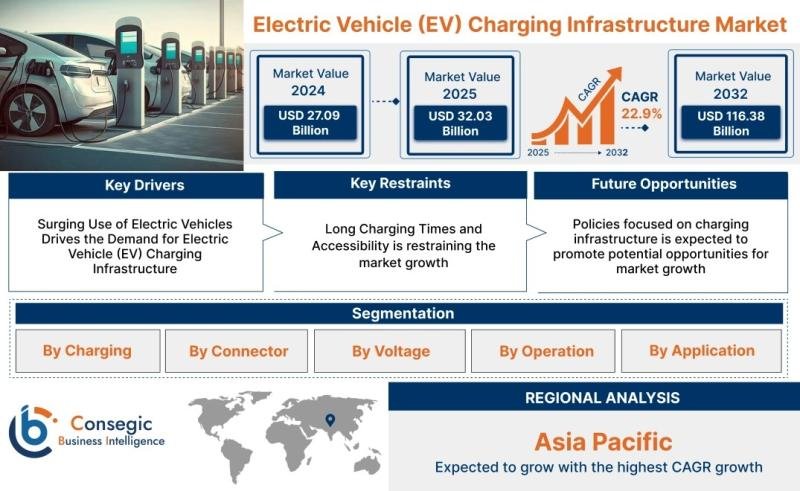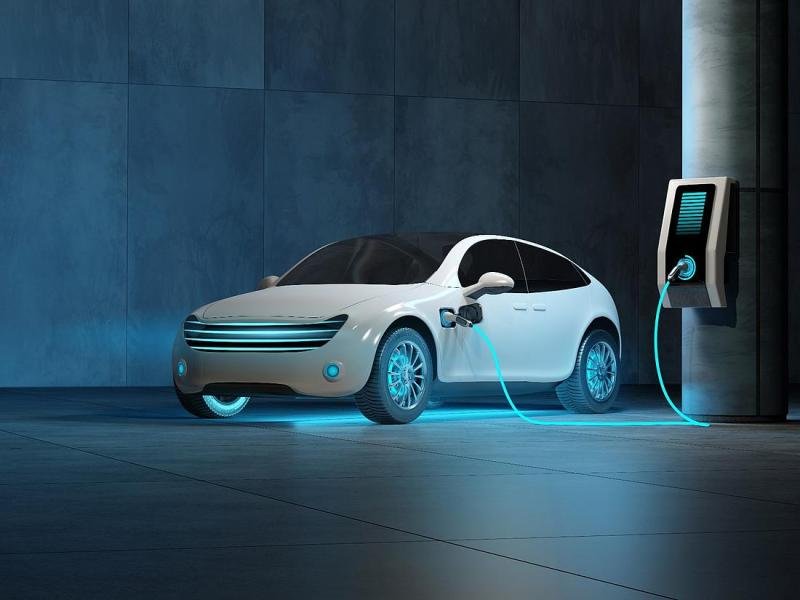“
The Electric Vehicle (EV) Infotainment market is experiencing exponential growth, driven by the increasing adoption of electric vehicles and the rising demand for advanced in-car technologies. Infotainment systems are becoming central to the EV driving experience, offering features such as navigation, entertainment, vehicle diagnostics, and connectivity. This market’s growth is fueled by technological advancements in areas like artificial intelligence, 5G connectivity, and augmented reality, which are being integrated into infotainment systems to enhance user experience and safety. Moreover, government policies promoting EV adoption and stringent safety regulations are contributing to the demand for sophisticated infotainment solutions. As the world shifts towards sustainable transportation, the EV Infotainment market plays a crucial role in making electric vehicles more appealing and functional, addressing global challenges related to climate change and urban air quality. The infotainment system is not merely a convenience but an integral part of the EV ecosystem, influencing consumer purchasing decisions and contributing to the overall driving experience. Further innovations in this market are expected to focus on creating seamless, personalized, and intuitive interfaces that cater to the specific needs of EV drivers, fostering a more connected and safer driving environment. This market is also contributing to the development of new business models and services, such as over-the-air software updates and subscription-based entertainment packages, creating new revenue streams for automakers and technology providers. The ongoing research and development efforts are directed toward addressing challenges related to energy efficiency, cybersecurity, and data privacy, ensuring that EV infotainment systems are not only advanced but also secure and sustainable.
Get the full PDF sample copy of the report: (TOC, Tables and figures, and Graphs) https://www.consegicbusinessintelligence.com/request-sample/2496
Market Size:
The Electric Vehicle Infotainment Market is estimated to reach over USD 40,982.86 Million by 2032, growing from USD 4,377.84 Million in 2024. It is projected to grow by USD 5,713.78 Million in 2025, with a CAGR of 38.3% from 2025 to 2032.
Definition of Market:
The Electric Vehicle Infotainment Market encompasses the hardware and software systems integrated into electric vehicles that provide information, entertainment, and connectivity to the driver and passengers. It includes a range of products and services designed to enhance the driving experience and vehicle functionality. Key components include integrated head units, which serve as the central control hub, displaying navigation, media, and vehicle data. Heads-up displays (HUDs) project critical information onto the windshield, improving driver safety by reducing distractions. Navigation units provide real-time traffic updates and route guidance, essential for efficient EV driving. Communication units enable connectivity for calls, messaging, and internet access. Rear seat entertainment systems offer entertainment options for passengers, particularly on long journeys. Multimedia systems support audio and video playback, enhancing the in-car entertainment experience. Other components include advanced driver-assistance systems (ADAS) integration, voice recognition, and smartphone integration. The market also includes related services such as software updates, data analytics, and cloud-based connectivity solutions. Key terms related to this market include telematics, HMI (Human-Machine Interface), OTA (Over-the-Air) updates, and cybersecurity. Telematics refers to the integrated use of telecommunications and informatics in vehicles, enabling features like remote diagnostics and emergency assistance. HMI focuses on designing user-friendly interfaces that allow drivers to interact safely and efficiently with the infotainment system. OTA updates allow for remote software updates, ensuring the infotainment system remains up-to-date with the latest features and security patches. Cybersecurity is crucial to protect infotainment systems from hacking and data breaches, ensuring the safety and privacy of vehicle occupants.
Get Discount On Report @ https://www.consegicbusinessintelligence.com/request-discount/2496
Market Scope and Overview:
The Electric Vehicle Infotainment Market spans a wide range of technologies, applications, and industries. Its technological scope includes hardware components such as displays, processors, and sensors, as well as software platforms, operating systems, and connectivity solutions. Applications range from basic infotainment features like music and navigation to advanced functionalities such as augmented reality navigation, driver monitoring systems, and over-the-air software updates. The market serves various industries, including automotive manufacturers, technology providers, software developers, and telecommunications companies. The infotainment system serves as the central hub for vehicle control, navigation, entertainment, and communication. Technologies such as artificial intelligence (AI) are increasingly integrated to personalize the driving experience, provide predictive maintenance alerts, and enhance safety through driver monitoring systems. The increasing demand for connected car services is driving the integration of 5G connectivity, enabling faster data transfer, real-time traffic updates, and seamless streaming of entertainment content.
The importance of the Electric Vehicle Infotainment Market in the larger context of global trends cannot be overstated. As the automotive industry transitions towards electrification, infotainment systems are becoming a key differentiator for electric vehicle manufacturers. These systems are no longer just a convenience but a critical component of the EV driving experience, influencing consumer purchasing decisions and brand loyalty. The market also contributes to the development of new business models and services, such as subscription-based entertainment packages, over-the-air software updates, and data-driven services. Furthermore, the market is closely linked to the development of autonomous driving technologies, with infotainment systems playing a key role in displaying information to the driver and providing a seamless transition between autonomous and manual driving modes. The global shift towards sustainability and connected mobility is driving the growth of the EV Infotainment Market, creating opportunities for innovation, investment, and collaboration across various industries.
Top Key Players in this Market
Panasonic Automotive Systems (Japan) Continental AG (Germany) Pioneer India Electronics Pvt Ltd. (India) Tesla (US) BMW (Germany) Audi (US) Ford Motor Company (US) Polestar (Sweden) Hyundai Motor Company (South Korea) Kia Corporation (South Korea) Harman International (US)
Market Segmentation:
The Electric Vehicle Infotainment Market is segmented by Component, Connectivity, Operating System, Application, Sales Channel, and End Use. By Component, it includes Integrated Head Units, Heads-Up Displays, Navigation Units, Communication Units, Rear Seat Entertainment, Multimedia, and Others. Connectivity is segmented into Wi-Fi, Bluetooth, GPS, and Cellular. The Operating System segment covers Android, Linux, QNX, and Windows. Application includes Safety and Security, Entertainment, Information, Navigation, Diagnostics, and Others. Sales Channels are divided into OEM and Aftermarkets. Finally, End Use is segmented into Battery Electric Vehicle (BEV), Hybrid Electric Vehicle (HEV), and Fuel Cell Electric Vehicle (FCEV). Each segment contributes uniquely to market growth. For example, integrated head units, with their central role in information display and control, are a key segment. The rising use of cellular technology enhances connectivity, enabling real-time data and features. Android, Linux, and QNX offer different functionalities and are popular OS options. Safety and security applications drive demand as EVs adopt more driver-assistance technologies.
Market Drivers:
Several factors are driving growth in the Electric Vehicle Infotainment Market. Technological advancements, such as the development of advanced driver-assistance systems (ADAS), augmented reality (AR) navigation, and 5G connectivity, are enhancing the capabilities and appeal of infotainment systems. Government policies promoting EV adoption, including subsidies, tax incentives, and emission regulations, are increasing the demand for electric vehicles, which in turn drives the demand for advanced infotainment solutions. Increasing consumer demand for sustainability and eco-friendly transportation options is also contributing to the growth of the EV market, with infotainment systems playing a key role in showcasing the benefits of EVs and enhancing the overall driving experience. The rise of connected car services, such as over-the-air software updates, remote diagnostics, and personalized content, is further fueling the demand for advanced infotainment systems. Moreover, the decreasing cost of battery technology is making EVs more affordable, which is expected to accelerate the adoption of electric vehicles and drive the growth of the infotainment market.
Market Key Trends:
Significant market trends in the Electric Vehicle Infotainment Market include the integration of artificial intelligence (AI) to personalize the driving experience, the development of augmented reality (AR) navigation systems that overlay digital information onto the real-world view, and the adoption of 5G connectivity to enable faster data transfer and seamless streaming of entertainment content. Another key trend is the increasing focus on cybersecurity to protect infotainment systems from hacking and data breaches, ensuring the safety and privacy of vehicle occupants. Over-the-air (OTA) software updates are becoming increasingly common, allowing automakers to remotely update infotainment systems with new features, bug fixes, and security patches. The integration of smartphone connectivity solutions, such as Apple CarPlay and Android Auto, is also a key trend, allowing drivers to seamlessly access their favorite apps and services from the infotainment system. Furthermore, there is a growing trend towards larger and higher-resolution displays, providing a more immersive and visually appealing experience for drivers and passengers.
Market Opportunities:
The Electric Vehicle Infotainment Market offers numerous growth prospects. Development of advanced driver-assistance systems (ADAS) integration presents a significant opportunity for enhancing vehicle safety and improving the driving experience. Augmented reality (AR) navigation offers the potential to provide drivers with more intuitive and informative guidance, enhancing safety and reducing distractions. The integration of 5G connectivity enables faster data transfer and seamless streaming of entertainment content, creating new opportunities for content providers and service providers. The development of personalized infotainment experiences, using artificial intelligence (AI) and machine learning (ML), offers the potential to create more engaging and relevant experiences for drivers and passengers. Moreover, the increasing adoption of electric vehicles in emerging markets presents a significant growth opportunity for infotainment system providers. Innovation is also needed in cybersecurity solutions to protect infotainment systems from hacking and data breaches, ensuring the safety and privacy of vehicle occupants.
Market Restraints:
The Electric Vehicle Infotainment Market faces several challenges. High initial costs associated with developing and integrating advanced infotainment systems can be a barrier to entry for smaller automakers and suppliers. Geographic limitations in terms of connectivity infrastructure and regulations can also restrict the adoption of certain infotainment features, particularly in emerging markets. Technical challenges, such as ensuring the reliability and security of infotainment systems, can also hinder market growth. Social factors, such as concerns about data privacy and cybersecurity, can also affect consumer acceptance of advanced infotainment features. Moreover, the complexity of integrating infotainment systems with other vehicle systems, such as battery management systems and powertrain control units, can present significant technical challenges. Furthermore, the lack of standardization in infotainment system architectures and interfaces can create interoperability issues and increase development costs.
Market Challenges:
The Electric Vehicle Infotainment Market faces a multitude of challenges that could potentially hinder its projected growth trajectory. One of the most significant challenges is the escalating complexity of infotainment systems. As these systems integrate more features, such as advanced driver-assistance systems (ADAS), augmented reality (AR) navigation, and seamless smartphone integration, the underlying software and hardware become increasingly complex. This complexity not only increases development costs but also raises the risk of software bugs and system failures, which can compromise vehicle safety and reliability.
Cybersecurity poses another critical challenge. With infotainment systems becoming increasingly connected to the internet and other vehicle systems, they become potential targets for hacking and data breaches. A successful cyberattack could compromise vehicle safety, steal personal data, or even remotely control vehicle functions. Addressing this challenge requires robust cybersecurity measures, including encryption, intrusion detection systems, and regular security updates. Furthermore, data privacy is a growing concern for consumers. Infotainment systems collect vast amounts of data about driver behavior, vehicle location, and personal preferences. Protecting this data from unauthorized access and misuse is essential to maintain consumer trust and comply with data privacy regulations.
The lack of standardization in infotainment system architectures and interfaces is also a significant challenge. Different automakers use different operating systems, hardware platforms, and communication protocols, which makes it difficult for suppliers to develop infotainment systems that can be easily integrated into a variety of vehicles. This lack of standardization increases development costs, limits economies of scale, and hinders innovation. The integration of infotainment systems with other vehicle systems, such as battery management systems and powertrain control units, presents technical challenges. Ensuring that these systems work seamlessly together and do not interfere with each other requires careful design and testing. Power consumption is another important consideration. Infotainment systems can consume a significant amount of energy, which can reduce the range of electric vehicles. Designing energy-efficient infotainment systems is therefore essential to minimize the impact on vehicle range.
Finally, the user experience is a critical factor. Infotainment systems must be intuitive, easy to use, and visually appealing. Poorly designed interfaces can be distracting and frustrating for drivers, potentially compromising safety. Creating a user-friendly infotainment system requires careful attention to human factors and user interface design principles. Addressing these challenges will require collaboration between automakers, technology providers, software developers, and cybersecurity experts. By working together, these stakeholders can develop innovative solutions that overcome the challenges and unlock the full potential of the Electric Vehicle Infotainment Market.
Market Regional Analysis:
The Electric Vehicle Infotainment Market exhibits varying dynamics across different regions, influenced by factors such as government policies, consumer preferences, and technological infrastructure. North America is a significant market, driven by the increasing adoption of electric vehicles and the presence of major automotive manufacturers and technology providers. Government incentives and stringent emission regulations are also contributing to the growth of the market in this region. Europe is another key market, with a strong focus on sustainability and the adoption of electric vehicles. The region is characterized by advanced technological infrastructure and a high level of consumer awareness regarding environmental issues. Asia-Pacific is expected to be the fastest-growing market, driven by the increasing production and sales of electric vehicles in countries such as China, Japan, and South Korea. The region is also characterized by a large population base and increasing disposable incomes. Furthermore, the presence of major automotive manufacturers and technology providers in the region is contributing to the growth of the market. In emerging markets such as Latin America and the Middle East, the adoption of electric vehicles is still in its early stages, but there is significant potential for growth in the coming years, driven by increasing urbanization, rising incomes, and growing awareness of environmental issues.
Frequently Asked Questions:
Q: What is the projected growth rate of the Electric Vehicle Infotainment Market?
A: The Electric Vehicle Infotainment Market is projected to grow at a CAGR of 38.3% from 2025 to 2032.
Q: What are the key trends in this market?
A: Key trends include the integration of AI, AR navigation, 5G connectivity, enhanced cybersecurity measures, and over-the-air software updates.
Q: What are the most popular Market types in this sector?
A: Key market types include Integrated Head Units, Heads-Up Displays, Navigation Units and systems supporting Safety and Security applications.
Follow us on:
https://www.linkedin.com/company/trending-solutions/
https://www.linkedin.com/company/techedge-digital/
https://www.linkedin.com/company/hiblink-tech/
https://www.linkedin.com/company/scope-trends/
https://www.linkedin.com/company/clearview-insightsio/“
Contact Us:
Consegic Business intelligence Pvt Ltd
Baner Road, Baner, Pune, Maharashtra – 411045
(US) (505) 715-4344
info@consegicbusinessintelligence.com
sales@consegicbusinessintelligence.com
Web – https://www.consegicbusinessintelligence.com/
About Us:
Consegic Business Intelligence is a data measurement and analytics service provider that gives the most exhaustive and reliable analysis available of global consumers and markets. Our research and competitive landscape allow organizations to record competing evolutions and apply strategies accordingly to set up a rewarding benchmark in the market. We are an intellectual team of experts working together with the winning inspirations to create and validate actionable insights that ensure business growth and profitable outcomes.
We provide an exact data interpretation and sources to help clients around the world understand current market scenarios and how to best act on these learnings. Our team provides on-the-ground data analysis, Portfolio Expansion, Quantitative and qualitative analysis, Telephone Surveys, Online Surveys, and Ethnographic studies. Moreover, our research reports provide market entry plans, market feasibility and opportunities, economic models, analysis, and an advanced plan of action with consulting solutions. Our consumerization gives all-inclusive end-to-end customer insights for agile, smarter, and better decisions to help business expansion.
Connect with us on:
LinkedIn – https://www.linkedin.com/company/consegic-business-intelligence/
YouTube – https://www.youtube.com/@ConsegicBusinessIntelligence22
Facebook – https://www.facebook.com/profile.php?id=61575657487319
X – https://x.com/Consegic_BI
Instagram – https://www.instagram.com/cbi._insights/
This release was published on openPR.








